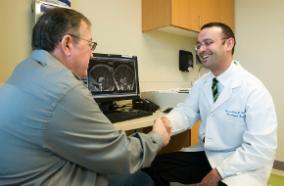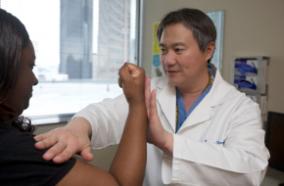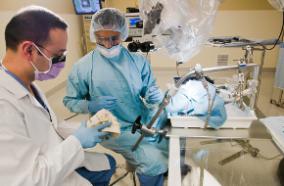Related Articles
Radiological and clinical predictors of scoliosis in patients with Chiari malformation type I and spinal cord syrinx from the Park-Reeves Syringomyelia Research Consortium.
J Neurosurg Pediatr. 2019 Aug 16;:1-8
Authors: Strahle JM, Taiwo R, Averill C, Torner J, Shannon CN, Bonfield CM, Tuite GF, Bethel-Anderson T, Rutlin J, Brockmeyer DL, Wellons JC, Leonard JR, Mangano FT, Johnston JM, Shah MN, Iskandar BJ, Tyler-Kabara EC, Daniels DJ, Jackson EM, Grant GA, Couture DE, Adelson PD, Alden TD, Aldana PR, Anderson RCE, Selden NR, Baird LC, Bierbrauer K, Chern JJ, Whitehead WE, Ellenbogen RG, Fuchs HE, Guillaume DJ, Hankinson TC, Iantosca MR, Oakes WJ, Keating RF, Khan NR, Muhlbauer MS, McComb JG, Menezes AH, Ragheb J, Smith JL, Maher CO, Greene S, Kelly M, O'Neill BR, Krieger MD, Tamber M, Durham SR, Olavarria G, Stone SSD, Kaufman BA, Heuer GG, Bauer DF, Albert G, Greenfield JP, Wait SD, Van Poppel MD, Eskandari R, Mapstone T, Shimony JS, Dacey RG, Smyth MD, Park TS, Limbrick DD
Abstract
OBJECTIVE: Scoliosis is frequently a presenting sign of Chiari malformation type I (CM-I) with syrinx. The authors' goal was to define scoliosis in this population and describe how radiological characteristics of CM-I and syrinx relate to the presence and severity of scoliosis.
METHODS: A large multicenter retrospective and prospective registry of pediatric patients with CM-I (tonsils ≥ 5 mm below the foramen magnum) and syrinx (≥ 3 mm in axial width) was reviewed for clinical and radiological characteristics of CM-I, syrinx, and scoliosis (coronal curve ≥ 10°).
RESULTS: Based on available imaging of patients with CM-I and syrinx, 260 of 825 patients (31%) had a clear diagnosis of scoliosis based on radiographs or coronal MRI. Forty-nine patients (5.9%) did not have scoliosis, and in 516 (63%) patients, a clear determination of the presence or absence of scoliosis could not be made. Comparison of patients with and those without a definite scoliosis diagnosis indicated that scoliosis was associated with wider syrinxes (8.7 vs 6.3 mm, OR 1.25, p < 0.001), longer syrinxes (10.3 vs 6.2 levels, OR 1.18, p < 0.001), syrinxes with their rostral extent located in the cervical spine (94% vs 80%, OR 3.91, p = 0.001), and holocord syrinxes (50% vs 16%, OR 5.61, p < 0.001). Multivariable regression analysis revealed syrinx length and the presence of holocord syrinx to be independent predictors of scoliosis in this patient cohort. Scoliosis was not associated with sex, age at CM-I diagnosis, tonsil position, pB-C2 distance (measured perpendicular distance from the ventral dura to a line drawn from the basion to the posterior-inferior aspect of C2), clivoaxial angle, or frontal-occipital horn ratio. Average curve magnitude was 29.9°, and 37.7% of patients had a left thoracic curve. Older age at CM-I or syrinx diagnosis (p < 0.0001) was associated with greater curve magnitude whereas there was no association between syrinx dimensions and curve magnitude.
CONCLUSIONS: Syrinx characteristics, but not tonsil position, were related to the presence of scoliosis in patients with CM-I, and there was an independent association of syrinx length and holocord syrinx with scoliosis. Further study is needed to evaluate the nature of the relationship between syrinx and scoliosis in patients with CM-I.
PMID: 31419800 [PubMed - as supplied by publisher]



















